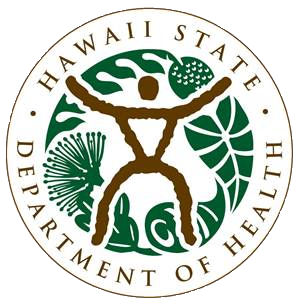WIIN – Frequently Asked Questions
Are private schools eligible for testing under this grant?
No. Only public schools are eligible for this testing. Eligible child care facilities can be public or private.
What will happen if a tap’s water sample tests above the action level of 15 parts per billion (ppb)?
If any of the samples result in lead levels above the action level of 15 parts per billion (ppb), the affected tap will be blocked off within 24 hours or the next school day and will no longer be available for use. Follow-up testing will be done and plans will be made to fix the problem causing the lead contamination.
Has my elementary school been tested? If not, when will it be tested?
Stage 1 of the WIIN project, done in 2021 tested 106 DOE elementary schools and 113 DHS licensed child care facilities. Stage 2 of the project, which begins in May 2022, will test the remaining 72 DOE elementary schools. To see which stage of the project includes your elementary school, please visit: https://health.hawaii.gov/heer/environmental-health/highlighted-projects/wiin/wiin-participating-schools/. Schools were assigned a stage of the project based on EPA criteria related to ages of the buildings and the children served at the school in addition to other various factors. Since the health impacts of lead are more sever for younger children, elementary schools are prioritized for testing.
Can grant funds be used to fix the fixtures or piping if lead contamination above the action level of 15 ppb is found?
No. Grant funds can only be used for testing and identification of problems. DOE and DOH are pursuing funding opportunities for fixture replacement and plumbing repairs as needed. There are also local and national resources that may be able to help fund remediation projects. For more information, check out:
- EPA’s Potential Funding Sources for Reducing Lead in Drinking Water in Schools and Child Care Facilities https://www.epa.gov/sites/production/files/2019-10/documents/3ts_funding_document_2019_508_v2.pdf
- Green and Healthy Homes Initiative Lead Funding Toolkit https://www.greenandhealthyhomes.org/ending-lead-poisoning/
Why was 15 ppb chosen as the action level?
Choosing an action level for lead in drinking water is difficult. It requires a balance of health risks with practicalities related to infrastructure and resources. 15 ppb is the EPA action level, which is an enforceable standard that applies to public water systems. 15 ppb is also the level used by public water systems testing for lead under the federal Lead and Copper Rule.
What should I do if I learn that a tap my child has been drinking out of has tested positive for lead?
It may be alarming to find out that a tap your child has been using has lead contamination. Drinking water from one of these taps does not automatically mean that your child has elevated levels of lead in their body. Blood testing for lead can be arranged by your child’s primary care doctor or pediatrician. Please contact them to discuss if blood testing is warranted for your child. If blood testing shows a blood lead level above the Center for Disease Control’s (CDC) action level of 5 ug/dL, it is important to evaluate for other potential sources of lead. Children can be exposed to lead in paint, dust, soil, air, and food, as well as drinking water. Most childhood lead exposures in Hawaii occur at home from deteriorated lead-based paint or soil contaminated with lead.
What should I do to protect against lead in drinking water at home?
Lead can be present in household drinking water due to plumbing such as lead service lines that connect the water main to the home, or internal plumbing within the home. Because of variables that cause lead levels in water to fluctuate, the best option to protect against lead in drinking water at home is to use a filter that is certified to remove lead. This could be a pitcher style filter, a faucet-mounted filter, or an inline refrigerator filter. However, not all filters are equally effective at removing lead. Look for both “NSF 42 and 53” certification numbers on filters to ensure that they have undergone independent testing and effectively remove lead from drinking water.
Other strategies to reduce lead in drinking water include:
- Using cold water to cook and to prepare baby formula. Do not cook with or drink water from the hot water tap; lead dissolves more easily into hot water. Boiling DOES NOT remove lead from water.
- Regularly clean faucet aerators, the screens at the end of faucets. Aerators can collect debris including lead. Rinse out collected materials to reduce debris accumulation.
- Flush your water. If the water in a particular faucet has not been used for an extended period of time, run water from cold-water pipes for 5+ minutes before drinking. The longer water sits in your home plumbing, the more lead may leach from lead-containing fixtures or service lines. Flushing provides short term benefits that are lost when the water sits in the pipes.
It is important to note that drinking water is not the only source of lead exposure. Most childhood lead exposures in Hawaii occur at home from deteriorated lead-based paint or soil contaminated with lead. Other potential sources of lead exposure include fishing sinkers, a parent’s hobbies or jobs, imported spices, cosmetics, dietary supplements and traditional medicines, imported or antique toys and toy jewelry, pottery and ceramics, and other consumer products.
